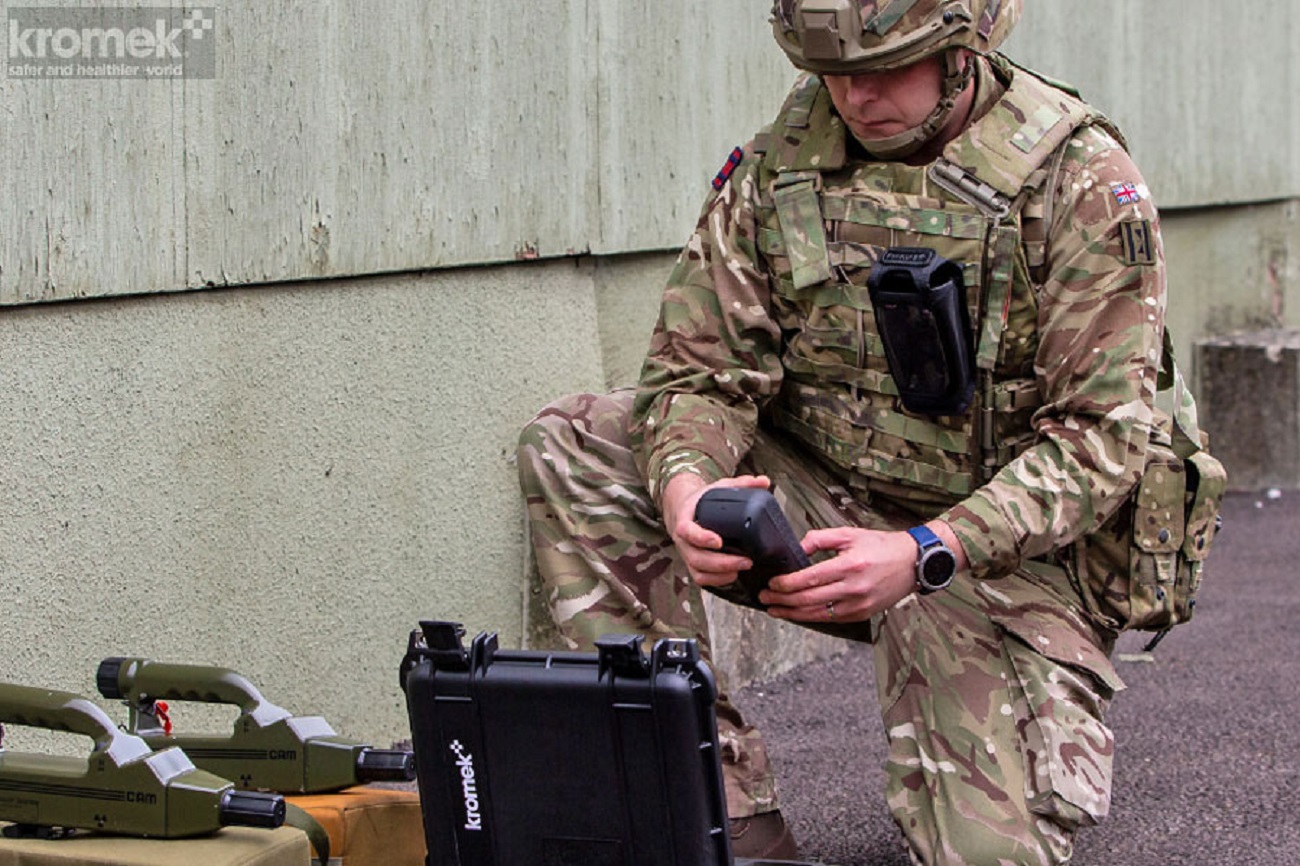Kromek, the designer and manufacturer of radiation detectors, based in Sedgefield Co. Durham, today launches a new Alpha Beta probe attachment to its ground-breaking handheld D5 RIID, already the world’s most portable and sensitive handheld Gamma and Neutron detector. The probe connects directly to the D5 RIID [Radioisotope Identification Device] and enables all types of isotopes to be detected by a single portable device. The upgraded D5 RIID has been proven to meet the British and US DEF-STAN and MIL-STD requirements. This revolutionary development gives the D5 RIID a capability even superior to the ground-breaking performance available at its launch in 2021. With a small form factor, ergonomic design and easy to read graphical display, the probe can be held in one hand for prolonged scanning missions and is compact enough to be used in any scanning location. The system also has a standoff bracket, so that the detector is not contaminated by Alpha or Beta particles.
The D5 RIID can operate in different modes while scanning and monitoring all radiation types: In Search Mode, the user can view real time counts per second with Alpha and Beta counts, shown alongside Gamma and Neutron counts. In Timer Mode it is possible to see how many Alpha and Beta counts occur in a set time period. And in the Threshold setting there is a handy visual bar to see how close the current Alpha and Beta counts are to the set threshold. These thresholds can be easily changed in the device settings. The device also allows the user to enable and disable NORM (naturally occurring radioactive material) Suppression thanks to a special Kromek algorithm which allows for enhanced differentiation between normal background sources and true sources giving greater survey and reconnaissance capability. This algorithm can be enabled in the device settings, but otherwise the system defaults to a standard k sigma algorithm found in all Kromek detectors.

Kromek’s Product Manager Eve Paylor said: “From the outset of this upgrade we set out to keep the D5 RIID at the forefront of capability available to both the specialist and general user. Kromek believes there is a demonstrable need to detect even the lowest levels of Alpha, Beta and Gamma isotopes and neutrons in a single device to allow for rapid and accurate identification. By significantly improving the threshold capability from an already world leading position we have sought to improve operational availability and logistics and ease of use for the operator.With the new Alpha Beta Probe, the D5 RIID is truly the most versatile handheld radiation detector available today. Conforming to the most rigorous British and American military, environmental and technical standards and with an exceptional degree of sensitivity and survivability, the device is suitable for use in the most challenging situations to detect all types of radioactive material. Its built-in endurance, ergonomic design and networked capability means that it is the most user-friendly device on the market. Kromek believes in constant review of our products we have to improve capability and operational utility. This upgrade does just that.”
For additional levels of security, the user can also determine which settings on the D5 DIID are routine or restricted. Routine users can access any non-PIN protected settings, whereas authorised users have another layer of on-device customisation available with PIN protected settings. One of the revolutionary new capabilities, perhaps the most, of the upgraded D5 RIID is the ability to set three different dose rate thresholds. The previous ‘High Dose Rate’ setting is replaced to allow detection of low, medium and high radiation levels. Through the use of a reset button the D5 RIID can be rest in the field (or on site) rather than being brought back to a central location.













